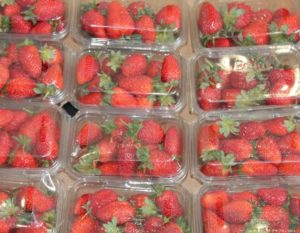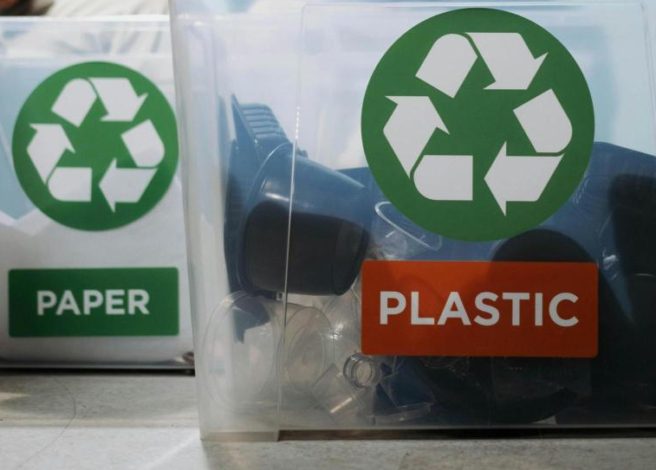At A Glance
- Plastic food packaging sustainability hinges on life-cycle impact: efficient production offsets heavier alternatives like glass or metal.
- Plastic outperforms heavier materials in CO₂e when accounting for weight, transport, and food waste prevention.
- Microplastics aren’t a major source from packaging, unlike textiles or paints.
- Beyond recycling: strategies like eco-design, circular systems, producer responsibility, and consumer education matter most.
Let’s be honest: Packaging choices can be complicated. The industry values innovation and responsibility, yet here we are, lost in a sea of mixed messages about plastic food packaging sustainability. Yesterday’s eco-villain can turn into today’s climate hero in no time, much like how milk quickly spoils in a poorly designed container.
For food industry professionals, these aren’t just academic debates. Your packaging choices directly impact your profits, customer loyalty, and whether regulators view your business with a smile or a citation pad.
This week, we had the pleasure of speaking with Conor Carlin, the Founder and President of Clefs Advisory LLC. As the President of the Society of Plastics Engineers (2024) and former General Manager for ILLIG in North America, Conor has established himself as an expert at the intersection of packaging and sustainability. His professional focus encompasses materials, packaging and recycling technologies, policy work, commercial strategy, and market intelligence.
This article cuts through the noise with real talk about plastic packaging. We’ll explore what sustainability means, not just talk about the buzzwords. We’ll look at how we measure a carbon footprint in real life. You’ll learn how different materials stack up against each other. We’ll also discuss facts about microplastics, recycling, and practical steps you can take that won’t cost a lot. Consider this your no-nonsense guide to packaging decisions that work for your business, your customers, and, yes, that planet we all share.
What Is Sustainability, Really?
 Before diving into packaging specifics, it’s worth establishing what sustainability actually means. In its essence, sustainability means using resources in ways that allow them to be replenished. It’s important to avoid using resources quicker than they can be replaced.
Before diving into packaging specifics, it’s worth establishing what sustainability actually means. In its essence, sustainability means using resources in ways that allow them to be replenished. It’s important to avoid using resources quicker than they can be replaced.
Sustainability is about saving resources. It looks at how we produce, make, and use products. For packaging, we look at the full lifecycle of materials. This involves getting raw materials, making items, transporting them, using them, and then disposing of or recycling them.
One important distinction to make: terms like “more or less sustainable” aren’t a helpful way to frame the issue. Something either is or isn’t sustainable. What varies is environmental impact — that’s an important distinction many don’t make.
Understanding a Carbon Footprint
A carbon footprint is a key measure when looking at the environmental impact of packaging materials. But what exactly does it mean?
A “carbon footprint” is the term used to describe the total amount of greenhouse gases generated or emitted as part of an economic activity. The most common greenhouse gases (GHGs) are carbon dioxide, methane, and nitrous oxide. Each of these gases contributes to global warming, but they have different levels of impact.
A carbon footprint is measured in CO₂ equivalents (CO₂e), allowing us compare different greenhouse gases using a standard method. These measurements form the basis of Life Cycle Assessments (LCAs). LCAs find and measure all the factors that affect a product’s environmental impact.
Plastic Packaging: Carbon Considerations
Different types of plastic have varying carbon footprints. The most commonly-used plastics, like polyethylene terephthalate (PET), polypropene (PP), polystyrene (PS), and polyethylene (PE), are derived from fossil fuels, e.g., oil and gas. Due to the energy-intensive nature of oil and gas exploration and production, the carbon footprint for plastics is heavily weighted at the front end, or the “cradle” stage of production. But because polymers are made in highly efficient systems, the environmental impacts of subsequent manufacturing steps are relatively lower. 
The carbon footprint of the same plastic can vary based on production methods and accounting approaches. For example, PET’s carbon footprint can range from 1.5 kg to 3.6 kg CO₂e per kilogram, depending on manufacturing processes and location.
A 2016 study by Trucost showed that using alternatives to plastic often leads to greater environmental harm. This is mostly due to the heavier weight and higher water usage of materials like glass, metal, and molded fiber. In fact, the Trucost study states that swapping out plastic packaging for other materials can increase CO₂ emissions by almost four times.
Plastic Food Packaging Sustainability vs. Other Materials
When evaluating plastic food packaging sustainability compared to different packaging materials, considerations include:
Glass and metals: These materials offer infinite recyclability and excellent barrier properties. They tend to be heavier than plastic alternatives, which impacts transportation energy. Aluminum and steel have strong recycling systems because they are valuable commodities and they have been recycled for centuries. In fact, according to The Aluminum Association, about 75% of all aluminum made is still in use today.
Pulp and Paper: These materials use more water in production than other materials. They often need chemical treatments or plastic laminates to provide the right barriers for food protection.
Bioplastics: PLA (polylactic acid) comes from plants, not fossil fuels. However, bio-based materials have their own environmental effects. They have a significant impact during their farming phase, and the use of water and fertilizers adds carbon-related costs in lifecycle assessments.
The relative environmental impacts of different packaging materials depend on many factors, including:
- Weight and efficiency of material use
- Energy required for production
- Transportation impacts
- End-of-life management (recycling rates, biodegradability)
- Protection efficacy (food waste prevention)
Microplastics and Nanoplastics in the Environment
 Microplastics (fragments smaller than 5mm) and nanoplastics (under 1 micrometer — for context, the width of a human hair can be 20-200 micrometers) are hot topics now. But what do we really know about them in food packaging? What is their effect on the environment?
Microplastics (fragments smaller than 5mm) and nanoplastics (under 1 micrometer — for context, the width of a human hair can be 20-200 micrometers) are hot topics now. But what do we really know about them in food packaging? What is their effect on the environment?
Studies reveal that microplastics mainly come from:
- Synthetic clothing fibers: Synthetic fibers, such as polyester, nylon, and acrylic, are major contributors to microplastic pollution. When these textiles are washed, worn, or dried, they release tiny plastic fibers into the environment. According to the European Environment Agency, 35% of global microplastics released into oceans originate from washing synthetic fibers.
- Paints: Paint particles are a significant source of microplastics, especially in aquatic environments. Paints contain plastic polymers that can flake off during application, wear and tear, or removal. A study by the Swiss-based Environmental Action (EA) found that paint particles account for 58% of all microplastics that end up in the world’s oceans and waterways every year.
- Tire wear: Tire wear is another major source of microplastics. As tires wear down during use, they release micro- and nano-particles into the air, soil, and waterways. Dutch researchers estimated that tires emit an average of 0.81 kg of particles per person annually.
Studies on food packaging show minimal microplastic release under normal usage conditions. Risk factors include high heat, abrasion, acidic foods, and container damage — highlighting the importance of proper use and maintenance.
Navigating PFAS Concerns
PFAS, known as “forever chemicals,” have gained attention lately because they last a long time in the environment and have been linked to human health issues. PFAS are a class of chemicals highly resistant to grease and water. The carbon-fluorine bond is very strong, helping resist degradation and breakdown. That’s why these compounds are called “forever chemicals.”
PFAS are found in some packaging, especially paper that resists grease. However, they are not used in PET food containers. The FDA regulates food contact materials rigorously to ensure safety.
Sustainability Challenges and Opportunities
Plastic food packaging sustainability faces specific considerations: 
- Resource concerns: Ties to fossil fuels spark worries about sustainability and carbon emissions in the long run.
- End-of-life management: In many areas, it’s still hard to recover, recycle, and dispose of plastic packaging.
Innovation continues across the packaging industry, with developments in:
- Bio-based materials compatible with existing recycling streams
- Advanced recycling technologies
- Improved collection and sorting systems
- Design for recyclability
- Material efficiency improvements
Beyond Recycling: What’s Actually Working
While recycling remains important, other approaches are gaining traction:
Circularity initiatives: Moving past basic recycling, aiming to redesign products so they are easier to recover and reuse.
Producer responsibility programs: Shifting waste management duties from consumers and municipalities to brands and manufacturers.
Material reduction: Using less packaging through innovative design.
Consumer education: Helping people understand proper disposal and recycling practices.
Actionable Steps for Food Industry Professionals
Here are some ideas to think about when choosing packaging based on recent research and industry trends:
- Evaluate complete lifecycle assessments. Look past individual traits, such as their durability, recyclability, or cost. Instead of focusing on these individual traits alone, it’s important to consider the entire lifecycle of the packaging. This means looking at how the packaging performs from production to disposal, including how it affects the environment and how it fits into your product’s journey from manufacturer to consumer.
- Explore recovery options: Choose materials that have recycling systems in place. Use fewer problematic additives. Also, consider all parts, like labels, adhesives, and closures.
- Ensure claims are accurate: Focus on specific and measurable statements about packaging. Use data to back them up and prevent greenwashing issues.
- Use multi-attribute decision-making: Consider food protection, shelf life, and transport efficiency when choosing packaging. Also, consider end-of-life management.
- Stay informed on regulations: Packaging sustainability regulations are evolving rapidly. Check out resources from the Sustainable Packaging Coalition and industry groups. They can help you stay updated.
- Support recycling improvements: Join industry groups and talks to enhance collection systems and sorting tech.
- Adopt systems thinking: Look at your whole value chain. Innovative packaging can cut waste in different areas of your operations.
Balancing Business and Environmental Sense
 The truth about plastic food packaging sustainability isn’t black and white. To make effective choices, consider product protection, resource efficiency, carbon impact, and how to manage end-of-life. Each of these aspects is important for your business context.
The truth about plastic food packaging sustainability isn’t black and white. To make effective choices, consider product protection, resource efficiency, carbon impact, and how to manage end-of-life. Each of these aspects is important for your business context.
Don’t just trust green marketing claims — look for solutions that work well for your specific needs. When you measure environmental impacts throughout the product’s life cycle, you can find packaging that’s good for your business and the environment.
Are you interested in learning more about plastic food packaging sustainability? Visit our Learning Center today. Have any questions? Don’t hesitate to reach out. We’re here to help!
Would you like to know more about Conor Carlin and his work at Clefs Advisory LLC? Connect with him on LinkedIn today.

